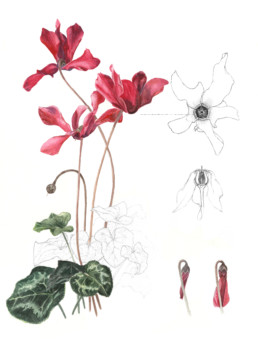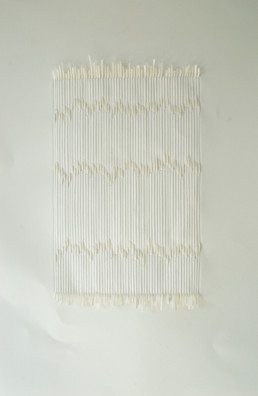MATTHEW FINGER
Matthew Finger
[1991, Illustration]
Based in Pawtucket, RI
Matthew Finger’s RISD Craft Gallery
The art in this body of work explores color, texture, and form through a variety of media– I call the work ‘assembled paintings’. By repeating various forms (often circles) I try to draw the viewer into the form through symmetry and the juxtaposition of colors, textures and shapes. The various forms within each painting are treated and painted separately and then reassembled in a puzzle like fashion. The finished work is then layered in resin lending it a glassy, tile-like feel. the pieces tend to work well in series or small grids. I find inspiration in the world around me from the worn patina of an antique toy to the colors found on a worn sidewalk or manhole cover. Candy labels and various vintage graphic design ideas also provide endless inspiration for this art.
What are some of the most important practices for your creative process?
I’d say letting go of control a bit and listening to your gut. Letting materials work naturally and really create without preconceptions. I find when I’m able to get to this point in my work, good things happen. Discipline, taking risks and a solid work ethic are truly important.

How does your current creative practice tie into your time spent at RISD?
RISD was such a complete immersion in the creative process. The four years breathing in this creative environment prepared me to take the art I create to such an intense level. I learned to question everything in regards to the work and at the same time to hone my skills and let things become instinctual. The work and time spent at this great school allowed for pure focus on becoming the artist I am today. There was also the pure joy in learning along side many great artists and professors.
Tell us about some of your main sources of inspiration.
I find inspiration in the world all around me from worn graphics on an antique sign, the weathered patina on a manhole cover, the graphics on a candy wrapper and even the colors of children’s toys. Much of the work is also inspired by nautical objects like boat hulls and nautical flags. I filter all these inspirations into what I hope is something new itself and that in the end can convey something original and beautiful.

Is there a work/body of work that you are particularly excited about sharing with us at RISD Craft this year?
Working with materials like chip board,spray paint, acrylic paints, resin, and gessoed papers, I created a body of work that explores color and texture through repeated forms. As the work has evolved, I’ve slowly scaled the art up from 5.5 inch square paintings to 3 foot square paintings. As the pieces get larger, I’ve notice the art takes on a different energy. I am honestly the most excited I’ve ever been about being an artist and so curious as to where this career will take me next.
Any recent press, exhibitions, achievements or awards you’d like to share with us?
One of my paintings receive second place in the mixed media category at the 2017 Warren Art Festival. I’ve also the pleasure of having my work on sale at RISD WORKS.

To see more of Matthew’s work, visit instagram.com/mattfingerart
RENEE MONTEIRO-BERNARD
Renee Monteiro-Bernard
[2000, Industrial Design]
Based in South Dartmouth, MA
Renee Monteiro-Bernard’s RISD Craft Gallery
Natural materials are used to create compositions that exhibit complementary interactions between forms. The natural forms may be hand painted, manipulated digitally in terms of color, or left in their original state. The natural forms are photographed by use of an open frame scanner in the dark. Natural forms whose parts lay directly upon the glass of the scanner reveal clear depictions and are the most focused, while other distant parts of the forms from the glass surface fall into the depth of the dark. The result is an ethereal representation of the natural worlds distinct forms.

What are some of the most important practices for your creative process?
For me, as a multi-disciplinary artist and designer, I feel that in my creative process that not being afraid to experiment is vital. I have found some of the most amazing results with exportation. This inspires me to see what will be next in my creative journey, enjoying the surprises that both fail and succeed…because there is always something to learn from either.
How does your current creative practice tie into your time spent at RISD?
My time spent at RISD as both a student and an instructor has allowed me to grasp the importance of multi-disciplinary work in design and fine arts. A cross-pollination of techniques, skills and practices lend to appreciating and treasuring the process of experimentation, exploration and innovation as an artist and designer.


Tell us about some of your main sources of inspiration.
The natural world has always remained my muse in design and fine art. The natural world has worked its elements into my mixed-media painting with natural found objects used as illusion, my design background with bio-mimicry, site-specific outdoor installation and my photography in the realms of macro and scanography.
Is there a work/body of work that you are particularly excited about sharing with us at RISD Craft this year?
A favored body of work is my most recent in the past year.. a collection of dramatic scanner bed photography that presents natural forms in a way that celebrates their “natural” beauty and at the same time begs the viewer to question its realism.
Any recent press, exhibitions, achievements or awards you’d like to share with us?
Recognized in education for STEAM Integration at the Secondary level in the New Bedford school district & Blackstone Valley Regional Vocational Technical High School.
Anything else you’d like to share?
I believe it is important – especially as an instructor in the arts, to “practice what you preach”. Process and exploration is extremely important. Without it, I would not have discovered my newest body of work in photography. I encourage both students and working artists and designers to work outside their comfort zones … I personally was amazed and excited about my findings in photography!! Hidden talents that I had not put into action, and when I did the results were inspiring.

To see more of Renee Monteiro-Bernard’s work, visit divinedarkroom.com
JEUNG-HWA PARK TEXTILES
Jeung-Hwa Park
[2000, MFA Textiles]
Based in Providence, RI
Jeung-Hwa Park’s RISD Craft Gallery
I combine knitting, felting and hand dyeing to create innovative three dimensional wearable scarves that bring sculptural sense of aesthetics to knitting.
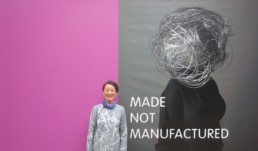
What are some of the most important practices for your creative process?
In searching for new aesthetics of knitting, I adapted knitting with two other traditional techniques: resist dyeing and felting. This combination of techniques express three dimensional surface aesthetics beyond the traditional aesthetics of knitting. Therefore, by combining knitting, resist dyeing, and felting, I create three dimensional wearable art that brings a sculptural and textural sense of aesthetics to knitting.
How does your current creative practice tie into your time spent at RISD?
The most valuable lesson I have learned from RISD was “sharing”.
To me, the study of knitting is continuous, mutual process of discovery that sets out on a long journey whose final destination is “Harmony”. My philosophy in art is to make people themselves toward visual poetry by offering my own experience and demonstrating my spirit. With this philosophy in my mind, I want to share the artistic sensibility of Korean culture and expression of artistic emotion.
Tell us about some of your main sources of inspiration.
My knitting is inspired by Yin and Yang Philosophy. In my artistic interpretation, my knitting is transformed into a combination of opposites: east and west, traditional and modern, hand-craft and machine technology, sky and earth, spiritual and physical, ambiguous and factual, dream and reality, seen and unseen. The combination restores the proper balance and continual harmony between the opposites, as in a marriage. Through my knitting, I want to convey to others unceasing persuasions toward harmony, aesthetics, and imagination.
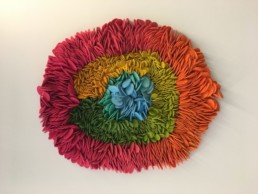
Anything else you’d like to share?
I would like to share my new fine art wall piece knitting. I would like to express my imagination between ambiguous and factual through knitting. I also want to bring an aesthetic communication of color, texture and volume.
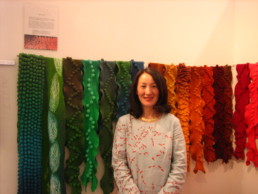
SHE-WELD
Marsha Trattner Trattner
[1987, MFA Sculpture]
Based in Brooklyn, NY
I make hand-forged steel home objects. Some pieces, as in the bowls and lamps, are made of an accumulation of forged pieces. Each piece, even in series, is made one at a time, and created much like a drawing in space. I hand hammer the metal to give it form and texture, and then weld parts with a torch to give visual flow to the pieces. To make pie pans and pizza pans, I hand-cut steel plate into circles or ovals. Then I forge (hammer & shape) the metal at 1800 degrees around various forms to create the desired depth and shape. Forged handles are welded to some of them. No two are exactly alike and viewers/clients respond to having choices in form and texture and finding that special one!
How does your current creative practice tie into your time spent at RISD?
RISD gave me my first exposure to torch work, although I did not realize at the time it would function so fundamentally in the development of my work and daily practice.
More intrinsic perhaps is the exploration of drawing- line, building spaces, finding a methodology of creating, that developed and cemented itself while I was RiSD. This is because the RISD Sculpture MFA program allows this exploration without needing to compartmentalize the arc of thought and action.

What are some of the most important practices for your creative process?
Drawing is the basic and the foundation of all my work.
I love working with other artists and my students as there are always new conversations. Developing custom pieces for clients is my favorite activity, in that we come up with the unexpected: a new work that is unique to the collaboration, and only exists because of combined ideas and serendipity.
If I am feeling stuck in the studio, I start where I left off. Just the act of doing, of initiating action, oils the rusty parts! And look at artists work that inspire me.

Is there a work/body of work that you are particularly excited about sharing with us?
I have some public pieces: New York City Department of Sanitation garbage cans (see above image).
“Progress Pavillion” Project for FacebookNY in conjunction with International Women’s Day
Any recent press, exhibitions, achievements or awards you’d like to share with us?
Press:
- Vogue Magazine: my stair bannister made for Cynthia Rowley
- NY1 Television Feature with Roger Clark
- Popular Mechanics: feature on my studio, and workshops I offer
- Japanese TV: “Made in NY”
Exhibitions:
- “New Art from an Old Craft at Gallery Flux”, Ashland VA, in conjunction with the Artist-Blacksmith’s Association of North America
- “Material Matters” at Brooklyn Waterfront Artists Coalition.
Plus, I recently taught bartenders to make bar spoons at my studio, in collaboration with American Craft Council and The Balvenie.
Anything else you’d like to share?
I have a new studio in Red Hook, Brooklyn!

To see more of Marsha’s work, visit she-weld.com
TIRESH
Sherit Levin
[1990, Illustration]
Based in Massachusetts
I create wearable art made from devoré velvet. My designs are printed on solid white fabric with a paste that removes some of the velvet pile, leaving its sheer silk chiffon backing, thus creating a burnout texture. I hand paint these patterns with brushes using dyes in a watercolor style.
I am drawn to create handmade organic forms that are inspired by and rooted in nature. The patterns are evolving or accidental and frozen in time. The varying colors illuminated in the iridescent material create moods; their combinations tell a story
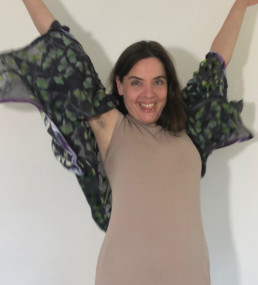
What are some of the most important practices for your creative process?
I hand-paint directly on to my fabrics. The look and feel of something handmade is very important to me. Making something tactile and mixing new colors is satisfying.
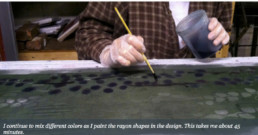
How does your current creative practice tie into your time spent at RISD?
The patterns for my hand-painted textiles are inspired by nature. During freshman year in 2D class we had a project to make a drawing of an evolving form. Kind of like and Escher print where a fish is drawn over and over, changing a little in shape each time so it becomes a bird. I remember spending time in the Nature Lab and being drawn to the patterns on sea shells, in leaves and in many of the other specimens.
Now I have Pinterest and macro photographs of nature.
Any recent press, exhibitions, achievements or awards you’d like to share with us?
I will be giving a presentation on the process of my velvet scarves to the Rhode Island Sewing Network in the spring.


To see more of Sherit’s work, visit sheritlevin.com
NOAH'S SUITCASE
Kim Mast
[1974, Apparel Design]
Based in Rhode Island
Noah’s Suitcase – RISD Craft Gallery
My love of dogs and sewing have combined to give me a niche- dog coats. Each coat has been carefully constructed using bespoke touches with the latest in high tech fabrics. Interacting with dogs and their owners, making a product that works, looks great and lasts through many dog lifetimes is a joy. I am very lucky.
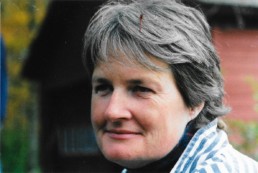
What are some of the most important practices for your creative process?
Living in an old farm (1765), we are surrounded by animals and a forged tradition, that plays into my art. It is the pairing of old and new that gives my work sparkle. It is a conversation with fabric, color and function that bring a product line that both owner and canine enjoy. These coats are a part of every great winter walk or rainy day outing. How fun is that!
How does your current creative practice tie into your time spent at RISD?
I have loved animals and sewn for all my life. Coming to RISD and meeting so many people who were “just like me.” It was the first time I fit in. Building on the foundation courses and perfecting my stitching, let me combine my love for animals. Designing dog coats is an odd but lucky find.
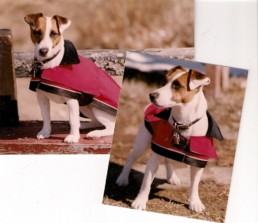
Tell us about some of your main sources of inspiration.
The British have a long history of horse and hound with the dress of the countryside. The fine Harris tweed or waxed cotton barn coat inspire me to produce a worthy version for dogs. Rugged, yet stylish, even for a dog, our best friend.
Is there a work/body of work that you are particularly excited about sharing with us at RISD Craft this year?
A departure from the dog coats, I have made my way to quilts, again the combination of old and new. It is an endless play of color, prints and texture. It informs my work in so many ways.
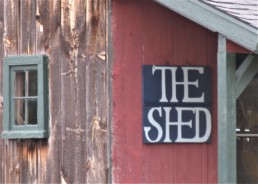
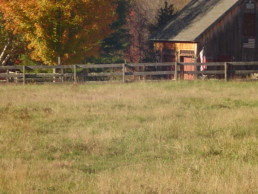
To see more of Kim’s work, visit thefarmcirca1765.com
KATHERINE RUDOLPH JEWELRY
Katherine Rudolph
[2009, Jewelry & Metalsmithing]
Based in Nashua, NH
Katherine Rudolph’s RISD Craft Gallery

What are some of the most important practices for your creative process?
My design process often begins with paper models which I find translate well into thin gauge sheet metal. The sheet metal, like the paper can be scored and fold into crisp forms. This is a favorite technique, as it allows for voluminous yet deceivingly lightweight forms. I work primarily in sterling silver and 18k gold, adding pops of color through the use of stones, as well as contrast and depth with oxidation. Choosing to work with stock materials such as sheet, tubing and wire allows for a degree of precision as well as interchangeability of “building components” which lend itself to the explorations of repetition and pattern. To achieve my personal vision, I try to listen to the materials to understand their properties so that I may work in symphony with rather than against these qualities, giving the final design the air of simple elegance. My jewelry ranges from easy to wear everyday adornment to sculptural art objects worn as conversation pieces.
How does your current creative practice tie into your time spent at RISD?
The time I spent at RISD undoubtedly left a lasting mark on my creative practice. Like my workspace in the Metcalf building, my bench is still piled with paper models and the studio walls are covered in architectural clippings from magazines and photos taken while traveling. Since graduating, I have often returned to my sketch books from college as well as material studies and a box of models created for assignments during my time at RISD. They have been invaluable as jumping off points for new work.


Tell us about some of your main sources of inspiration.
My work is highly inspired by architectural forms. Photos taken while traveling often serve as the origins of a design. When looking to the skyline, I enjoy isolating specific buildings and deconstructing them with an interest in understanding their logic and order. The smallest architectural details don’t go overlooked. I am continuously adding to my digital image collection and clipping file from various publications which are referenced as sources of inspiration. One of my primary challenges is the reinterpretation of these architectural references in the scale of jewelry and the body. Specific architectural references that have inspired my jewelry include: The Ca’ d’Oro -Venice, Italy. Richard Meier’s Jubilee Church -Rome. Neuschwanstein Castle-Germany. The Air Force Academy Chapel- Colorado and the aesthetic of Santiago Calatrava.
Is there a work/body of work that you are particularly excited about sharing with us at RISD Craft this year?
My current body of work further explores the possibilities of scoring and folding 26 and 24 gauge silver and gold sheet, to create voluminous yet deceivingly light weight forms. I am focusing on scoring curved lines, which when folded create a unique combination of convex and concave surfaces. The “Scored Leaf Necklace” which I designed at RISD and which won first place in the International Precious Metals Institute design competition in 2009, was the catalyst for my continued interest in this particular fabrication technique. Through exploration of line and form, the scoring and folding technique has led to my current body of work, which includes the Scallop series.
Any recent press, exhibitions, achievements or awards you’d like to share with us?
In February 2017 I was juried into the League of New Hampshire Craftsmen and will be participating in The Shop At The Fair during the annual Craftsmen’s Fair in August 4-12.
In 2014 I joined the committee of the Nashua International Sculpture Symposium and have actively been participating in fundraising and the coordination of our annual symposium. 2018 marked our 11th anniversary.
Anything else you’d like to share?
Additional pieces can be found at etsy.com/shop/katherinerudolph

To see more of Katherine’s work, visit katherinerudolph.com
KRISTEN GOSSLER
Kristen Gossler
[1989, Painting]
Based in East Providence, RI
Kristen Gossler’s RISD Craft Gallery
I am exploring the viewers interaction with the everyday experience through the expression of light and shadow in their environment.
What are some of the most important practices for your creative process?
1. Walk into the studio Daily!
2. Expose yourself to “the now” see every show you can – go down every alley (i mean real alley’s) and view everything as art
3. Draw from scientists, writers, musicians and chefs….anyone breaking new ground where fresh ideas live
4. Work
5. Evaluate

How does your current creative practice tie into your time spent at RISD?
The most important intellectual muscle I developed relates to the act of pushing through during that moment of resistance. Its at that moment that you have an opportunity to learn something. Push through…..


Tell us about some of your main sources of inspiration.
If I had to go out on stage and paint the same painting over and over for an audience, I would lose my mind. Watching how those artists remain relevant always informs my work. Additionally reaching back into time….like when we thought the world was flat, informs my work in a different way. Trying to experience the fear and unknown and really try to put my headspace back to a time when to eat and be clothed was a challenge, when spoken word was the news and you really had to feel that something was important to express it….what was that time like? It makes my daily struggle literally feel like butter. 🙂
Is there a work/body of work that you are particularly excited about sharing with us at RISD Craft this year?
Yes, my most recent exploration of light and shadow on the mundane.
Any recent press, exhibitions, achievements or awards you’d like to share with us?
RISD Unbound, Providence, RI: April 2018
Barrington Arts Festival, Barrington RI: June 2018
Show in the Hutson Gallery, Provincetown: June – Sept. 2018
Solo exhibition in Jamaica Plain Branch Library, Boston: Sept. 2018

To see more of Kristen’s work, visit kgossler.com
2018 GRADUATES
We’re delighted to announce that these brand new alumni–having just graduated in June– will be joining us for the sale this year! Visit them at RISD Craft on October 6.
JENNIFER XIAO 18 IL
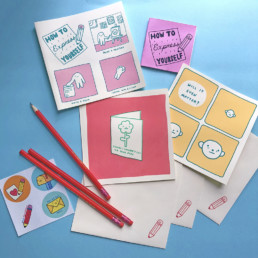
JB FIREWORKS
Jenine Bressner
[2001, Glass]
Based in Providence, RI
JB Fireworks’ RISD Craft Gallery
The quickest way to try to communicate with other people is by adorning ourselves with cultural signifiers. I know that my jewelry has been and continues to act as an impetus for communication between strangers. Ignitions are sparked when we take risks like wearing something unusual or talking with people unfamiliar to us. I want to see things I’ve never seen before, and I strive to make work that satisfies this wish.

What are some of the most important practices for your creative process?
Experimenting, playing, and trying to do something in a way I haven’t before enable me to maintain plasticity in my brain.
Sometimes that means actually getting lost and traveling on paths I don’t know in my own town, or combining seemingly disparate materials.
How does your current creative practice tie into your time spent at RISD?
At RISD, I realized that we could do things we previously thought were impossible. The amount of effort, challenge, failure, growth, and learning we squeezed into a few days made the outside world seem very coddled, in comparison.
I learned to look more closely at what already exists to try to improve upon it, how to better budget my time, and I learned that everything is possible.

Tell us about some of your main sources of inspiration.
Since I gave birth, my time is much more limited. Having tighter parameters around when I can work reminds me of Foundation assignments at RISD. The time I have in studio is spent making glass and textile components, and I assemble those into larger wearable pieces at home while my kid is asleep.
Color and light excite me and inform my work more than anything else right now.
Is there a work/body of work that you are particularly excited about sharing with us at RISD Craft this year?
I expect to have some glass chains (which match everything by default) and I’m especially having fun playing with color and texture in my flameworked glass and merino wool earrings!
Any recent press, exhibitions, achievements or awards you’d like to share with us?
I just got back from teaching Glass Flameworking at Snow Farm in Western Massachusetts, and my work will be featured in Facèré Gallery’s “Signs of Life” book and exhibition in Seattle this fall.

Anything else you’d like to share?
RISD CRAFT has the most stylish children and dogs of any craft sale I’ve ever seen! Thanks for being such a beautiful community.
To see more of Jenine’s work, visit instagram.com/jbfireworks


